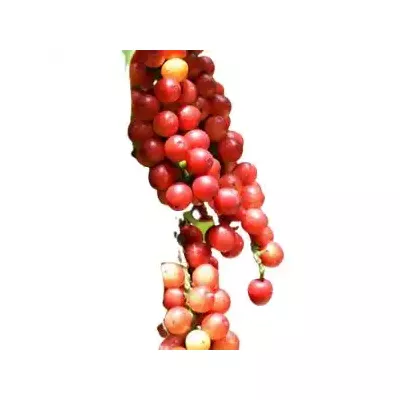



Bignay is a sturdy tropical fruit tree native to Southeast Asia. It is a low maintenance plant that produce small, red or purple berries that are rich in antioxidants.
See more about Bignay fruit description and growing tips.

Pay using UPI, Card or Netbanking

Shipping within 3 working days
Bignay is an attractive tropical fruit plant, especially during the fruiting season. Its fruit and leaves have medicinal value. Bignay trees are drought-tolerant.
Bignay is natively found in the lower Himalayas, Southeast Asia, and especially the Philippines. It grows at an altitude of up to 1000 m.
Bignay fruits are small in size, averaging less than one centimetre in diameter, and have a fairly uniform round-to-oval shape.
Ripe fruits are sweet, while unripe fruits have a mix of acidic, tart, and sour flavours.
The bignay fruit clusters are often multi-colured as the berries of the same bunch ripe at different times. These hanging bunches of berries are quite attractive, with colours ranging from green to yellow, orange, and finally red.
The bignay fruit juice stains clothes, so one must be careful while handling this fruit.
Bignay can be frozen for several months.
Its tender leaves are used in salads or as a leafy vegetable.
Bignay is cooked with rice or other foods to add a sour taste.
The leaves of the bignay tree have medicinal value and are useful for treating skin disorders, syphilis, and snake bites.
Root and leaf extracts of the bignay plant are useful in treating indigestion, coughing, and stomachaches.
Bignay is not strictly tropical, as it can withstand cold climates.
Grafted plants are often used for propagation as there are male and female trees.
The plant grows to a height of 3 - 8m, but under certain conditions may grow as tall as 30 m in height.
They grow quite well in a container, too. A container of 100 litres or more gives the best results.
Bignay grows best in a soil of pH between 6 and 7. However, it can also grow in a slightly alkaline soil. Does well in full sun to light shade.
Data sheet